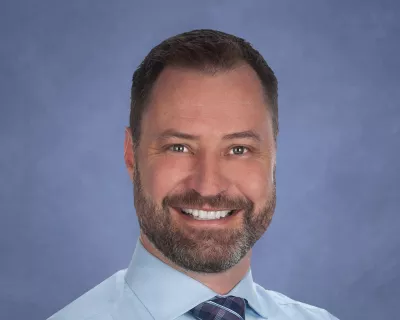
Shoulder
The Shoulder
The shoulder is your body’s most flexible joint as well as one of the most complex. Shoulder pain is very common, affecting millions of people every year. Shoulder pain can come on suddenly and intensely, like after a fall or sports injury, or it may start off mild and worsen over time.
Our specialty-trained shoulder surgeons at Southern Oregon Orthopedics in Medford and Grants Pass, Oregon, perform surgical and nonsurgical treatments for a wide range of shoulder problems to optimize your shoulder function and health.
Do I Need to See a Shoulder Expert?
Shoulder pain is the most prevalent indicator of an underlying problem in the joint. Other signs you should seek care from a shoulder specialist include:
- Stiffness
- Reduced range of motion
- Arm weakness
- Shoulder pain that worsens with certain movements
- Feeling like your shoulder might pop out of the socket
If you experience any of these symptoms, call Southern Oregon Orthopedics for an accurate diagnosis and timely treatment from our experts. Early detection is a critical part of preventing serious shoulder injuries.
Our experts treat the full range of shoulder problems, including:
- Biceps tendon ruptures
- Rotator cuff tears
- Shoulder dislocation
- Shoulder impingement
- Shoulder instability
- Shoulder labrum tears
- Sprains, strains, and fractures
Arthritis, including osteoarthritis, rheumatoid arthritis, and post-traumatic arthritis, can also affect the shoulder.
Discover your path to recovery with our Online Guide to Hand and Upper Extremity Care. Gain invaluable insights into your injuries, treatments, and available options. Use the button to access your roadmap to better upper extremity health.
Unlock our tool for mastering joint care management: introducing our Online Guide to Joint Replacement. This resource is packed with insights on chronic joint pain, surgical procedures, and invaluable tips for your journey ahead.
How Can I Get a Diagnosis & Treatment for My Shoulder Condition?
Accurate diagnosis of shoulder pain will involve a thorough physical examination and, if necessary, diagnostic tests such as digital X-rays, MRI scans, CT scans, or ultrasound. Our team at Southern Oregon Orthopedics takes the most conservative approach to treatment possible. Often, they begin treating shoulder pain with physical therapy, including stretching and strengthening exercises you perform at home. Treatment options may include:
Nonsurgical Approaches
- Activity modifications
- Anti-inflammatory medications
- Braces or splints
- Corticosteroid injections
- Physical therapy
Surgical Options
- Acromioclavicular (AC) joint reconstruction
- Arthroscopy for minimally invasive joint repair
- Labral repair or reconstruction
- Rotator cuff repair
- Shoulder joint replacement
- Shoulder stabilization surgery
If your condition is severe or if your pain and symptoms persist despite treatment, surgery may be necessary. Our surgeons perform a variety of shoulder procedures, including minimally invasive shoulder arthroscopy and shoulder joint replacement. We also offer on-site presurgical and postsurgical rehabilitation to ensure the best possible outcome.
Shoulder Replacement Surgery
Your shoulder is a ball-and-socket joint that forms where the round head of your upper arm bone (humerus) fits into a shallow groove (glenoid) in your shoulder blade. Shoulder replacement, also known as shoulder arthroplasty, involves removing damaged parts of this joint and replacing them with artificial components.
As with other types of joint replacement, the goal is to relieve pain and improve mobility so you can resume normal activities. Presurgical and postsurgical rehabilitation help prepare you for the procedure and facilitate a healthy, speedy recovery.
World-Class Shoulder Care at Southern Oregon Orthopedics
The doctors at Southern Oregon Orthopedics are specialty-trained experts in their fields of bone, joint, and muscle care. Our specialized shoulder doctors have extensive training and experience in diagnosing and treating shoulder injuries and conditions. With a commitment to exploring nonsurgical options first, they ensure personalized care for each patient, incorporating advanced surgical techniques when necessary.
If you are experiencing shoulder pain or problems with shoulder function, don't hesitate to seek expert care at Southern Oregon Orthopedics. For the highest degree of specialized shoulder care, schedule an appointment in Medford or Grants Pass by calling (541) 779-6250 or requesting an appointment online today.
Our Orthopedic Outpatient Center is designed for you and your treatment needs and comfort. From check-in to your recovery room, our state-of-the-art facility is tailored to the specialized care for the orthopedic patient, all with the highest standards of safety and quality care. Experience exceptional surgical care at our Orthopedic Outpatient Center.
2780 E Barnett Road, Suite 200
Medford, OR 97504












